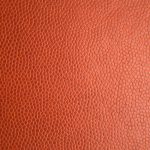To clean bouclé fabric, vacuum gently weekly using a brush attachment and blot spills immediately with a clean cloth to avoid stains. Use mild detergent tested on a hidden spot for spot cleaning, blotting from the edges inward to protect the loops. Avoid harsh rubbing or strong solvents, and keep bouclé out of direct sunlight to prevent fading. For stubborn stains or deep cleaning, consider professional care. Learn how to preserve bouclé’s unique texture and extend its life with simple maintenance tips.
Table of Contents
Key Takeaways
- Vacuum bouclé fabric weekly with a soft brush attachment to gently remove dust without damaging loops.
- Immediately blot spills with a clean, dry white cloth; avoid rubbing to prevent fuzzing or distortion.
- Spot clean using a mild detergent tested first on an inconspicuous area, applying gently from the edges inward.
- Schedule professional dry cleaning once or twice a year, or more for high-traffic items, choosing specialists experienced with delicate fabrics.
- Protect bouclé fabric from direct sunlight and heavy pressure to maintain its texture and prevent fading or matting.
Understanding Bouclé Fabric and Its Characteristics
Bouclé fabric stands out for its unique looped texture, which gives it a soft, nubby feel. When you run your fingers over bouclé, you’ll notice those tiny loops and curls, creating a tactile surface that’s both cozy and visually interesting.
It’s made by weaving or knitting yarns that have loops, often combining different fibers like wool, cotton, or synthetic blends. This texture makes bouclé durable but also prone to snagging if you’re not careful.
You’ll find bouclé popular in upholstery and fashion because it adds dimension and warmth. Understanding its composition helps you recognize why it needs gentle care.
Daily Maintenance Tips for Bouclé Upholstery
The delicate loops and texture that make bouclé so appealing also mean it requires careful daily upkeep.
To keep your bouclé upholstery looking fresh, you need consistent, gentle care. Here are some daily maintenance tips to follow:
- Vacuum regularly using a brush attachment to remove dust and debris without damaging loops.
- Quickly blot spills with a clean, dry cloth to prevent stains from setting.
- Avoid rubbing the fabric, which can cause fuzzing or distortion.
- Rotate cushions often to guarantee even wear and reduce pressure on specific areas.
- Keep your bouclé out of direct sunlight to prevent fading and fiber weakening.
Tools and Cleaning Supplies Needed for Bouclé
Keeping your bouclé fabric clean starts with having the right tools and supplies on hand. You’ll want gentle items that protect the fabric’s unique texture without causing damage. Here’s a quick list of essentials to keep nearby:
| Tool/Supply | Why You Need It |
|---|---|
| Soft-bristle brush | Helps remove dirt without snagging |
| Mild detergent | Cleans gently without harsh chemicals |
| White cloths | Prevents color transfer during cleaning |
These simple tools let you tackle dirt and spills carefully, preserving bouclé’s delicate loops and texture. Avoid harsh brushes or strong solvents, which can ruin the fabric’s look and feel. With these supplies in your arsenal, you’ll feel confident maintaining your bouclé’s beauty daily.
Step-by-Step Guide to Spot Cleaning Bouclé Fabric
First, you’ll want to identify the type of stain to pick the right cleaning solution.
Next, apply the cleaner carefully, making sure it’s safe for bouclé fabric.
Finally, use gentle blotting techniques to lift the stain without damaging the texture.
Identify the Stain Type
How can you effectively tackle a stain on bouclé fabric without making it worse? The key is to identify the stain type first. Knowing what you’re dealing with helps you choose the right cleaning method and prevents damage.
Start by examining the stain’s color, texture, and location. Common types include:
- Food and drink spills (wine, coffee, grease)
- Ink or dye stains
- Mud or dirt
- Oil or makeup
- Protein-based stains (blood, sweat)
Each stain behaves differently on bouclé’s looped fibers, so take a moment to assess carefully.
Avoid rubbing or applying harsh treatments before identification, as this can embed the stain deeper. Once you know the type, you’re ready to select the proper cleaning solution without risking harm to the delicate fabric.
Choose Appropriate Cleaning Solution
Because bouclé fabric is delicate and textured, choosing the right cleaning solution is vital to avoid damage.
Start by selecting a mild detergent specifically formulated for delicate fabrics or upholstery. Avoid harsh chemicals, bleach, or strong solvents, as they can weaken the fibers and ruin the texture.
For protein-based stains like food or sweat, a mixture of cool water and gentle liquid soap works well. For oil-based stains, consider a small amount of dishwashing liquid diluted in water.
Always test your chosen solution on an inconspicuous area first to check for colorfastness and fabric reaction.
Using the correct cleaning solution guarantees you effectively treat the stain without compromising the bouclé’s unique loops and softness. This careful approach preserves both the look and feel of your fabric.
Gentle Blotting Techniques
Once you’ve selected a suitable cleaning solution, the next step is to apply it carefully using gentle blotting techniques. This method prevents damaging the delicate bouclé texture while effectively lifting stains.
Here’s how to proceed:
- Dampen a clean, white cloth with your chosen cleaner.
- Gently press the cloth onto the stained area—don’t rub or scrub.
- Blot from the outer edges toward the center to avoid spreading the stain.
- Use a dry cloth to absorb excess moisture after blotting.
- Repeat as needed, allowing the fabric to air dry between applications.
How to Remove Common Stains From Bouclé
When stains appear on your bouclé fabric, you’ll want to act quickly to prevent permanent damage.
For liquid spills like coffee or wine, immediately blot with a clean, dry cloth—don’t rub. Next, dampen a cloth with cold water and gently dab the stain from the outside inward to avoid spreading.
For oily stains, sprinkle some baby powder or cornstarch to absorb grease; leave it for 15 minutes, then brush off carefully.
Ink or dye stains may require a small amount of rubbing alcohol applied with a cotton swab, but test on an inconspicuous area first.
Always avoid harsh chemicals, as they can damage bouclé’s textured fibers.
If a stain persists, consider consulting a professional cleaner familiar with delicate fabrics.
Washing and Drying Bouclé Clothing
Although bouclé fabric offers a luxurious texture, you should handle washing and drying with care to maintain its appearance.
Machine washing can damage the loops and texture, so always opt for gentler methods. Here’s how you can properly care for your bouclé clothing:
- Hand wash with cold water and mild detergent.
- Avoid wringing; gently press out excess water instead.
- Lay flat on a clean towel to dry, reshaping the garment.
- Keep away from direct sunlight to prevent fading.
- If machine washing is necessary, use a delicate cycle inside a mesh bag.
Following these steps helps retain bouclé’s unique texture and prevents stretching or distortion, keeping your clothing looking fresh and elegant.
Professional Cleaning Options for Bouclé Items
When it comes to bouclé items, professional dry cleaning can help preserve their texture and shape.
You’ll want to choose a cleaner who specializes in delicate fabrics to avoid damage.
Depending on how often you wear your bouclé, scheduling regular professional care can keep it looking fresh longer.
Dry Cleaning Benefits
Because bouclé fabric has a delicate texture and complex weave, you’ll benefit greatly from professional dry cleaning. This method gently removes dirt and stains without damaging the loops or causing shrinkage.
Dry cleaning preserves the fabric’s softness and vibrant appearance, extending your bouclé items’ lifespan.
Here’s why dry cleaning works so well for bouclé:
- Uses solvents instead of water, preventing fiber distortion
- Minimizes friction that can cause pilling or fuzziness
- Targets stubborn stains without harsh scrubbing
- Maintains the fabric’s original texture and shape
- Offers expert care tailored to delicate materials
Choosing a Specialist
Selecting the right specialist is crucial to maintaining your bouclé fabric’s quality and appearance.
Look for a cleaner who’s experience with delicate fabrics, especially textured materials like bouclé. Don’t hesitate to ask about their cleaning methods and whether they use gentle solvents or processes suited for your item.
Certifications or memberships in professional cleaning associations can indicate reliability and expertise. You should also check reviews or get recommendations from friends who’ve had similar items cleaned.
Before handing over your bouclé piece, discuss any stains or damage so the specialist can tailor their approach.
Choosing a knowledgeable professional guarantees your fabric won’t shrink, lose texture, or fade, keeping your bouclé looking fresh and vibrant after each cleaning.
Frequency of Professional Care
Professional cleaning for bouclé fabric should typically happen once or twice a year, depending on how often you use the item and its exposure to dirt or stains.
If your bouclé piece is in a high-traffic area or gets frequent use, consider more regular care to maintain its texture and appearance. You should also schedule professional cleaning after any major spills or visible stains.
Here are key factors to guide your cleaning frequency:
- Frequency of use: daily vs. occasional
- Presence of pets or children
- Exposure to smoke or cooking odors
- Visible soiling or staining
- Manufacturer’s care recommendations
Tips to Preserve the Texture and Appearance of Bouclé
To keep your bouclé fabric looking fresh and textured, you’ll want to handle it with care from the start. Avoid harsh rubbing and excessive friction to prevent the loops from snagging or flattening. Regularly fluff your bouclé with gentle hand motions to maintain its signature nubby texture. Also, keep it away from direct sunlight to avoid fading.
Here’s a quick guide to preserving your bouclé:
| Tip | Reason |
|---|---|
| Vacuum gently weekly | Removes dust without damaging loops |
| Rotate cushions | Guarantees even wear and tear |
| Use fabric protectors | Guards against spills and stains |
| Avoid heavy pressure | Prevents matting of the texture |
Following these tips helps your bouclé stay soft and vibrant longer.
Frequently Asked Questions
Can Bouclé Fabric Be Dyed at Home?
You can dye bouclé fabric at home, but it’s tricky due to its texture and fiber blend. You’ll need fabric dye suitable for the material and patience to avoid uneven color or damage during the process.
Is Bouclé Fabric Hypoallergenic?
Bouclé fabric isn’t inherently hypoallergenic, but you can reduce irritation by choosing natural fibers like wool or cotton blends. If you have sensitive skin, test a small area first to avoid any allergic reactions or discomfort.
How Long Does Bouclé Fabric Typically Last?
You can expect bouclé fabric to last around 5 to 10 years with proper care. Its durability depends on usage, maintenance, and exposure to wear, so treating it gently will help extend its lifespan considerably.
Can Bouclé Be Used Outdoors?
Bouclé’s beautiful but best kept indoors; its textured threads tend to tarnish when tossed outside. If you want weather-wary wear, choose specially treated outdoor options instead. You’ll protect your pieces and preserve their plush perfection.
Are There Eco-Friendly Bouclé Cleaning Products?
Yes, you can find eco-friendly bouclé cleaning products! Look for natural, biodegradable ingredients and avoid harsh chemicals. These gentle cleaners protect your fabric and the environment, so you can clean your bouclé responsibly and effectively.
- The Science of Dyeing: How to Separate Dyes With Chromatography - July 13, 2025
- A Guide to Cold Water Dyes and Painting Techniques - July 13, 2025
- What Is a Dip Dye Fabric Technique? - July 13, 2025







